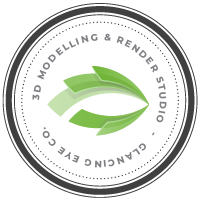A sustainable workplace eases the way for introducing eco-friendly practices
For those companies who are aware of environment issues, design is an essential component of a more productive office. In a sustainable workplace, performance and creativity are favoured.
If we talk about an ideal office, natural light should enters through skylights and glass walls to the ceiling, while discreet air vents manage the flow of fresh air. The individual offices are organized around an interior garden that filters the air and decorate the workspace with greenery, an invaluable resource for reinforcing the employee mood. That sounds good right?
Sustainability in offices has grown by leaps and bounds over the last 10 years. For this reason, those designs that can improve a company’s environmental performance are ranking high on every customer’s wish list.
Respecting environment and employees
Popular eco-friendly practices include selecting energy-efficient office equipment and lamps, as well as floor and wall coverings from sustainable sources, such as reclaimed wood or recycled building materials.
As indoor air pollution is a growing concern, eco-friendly interior design is also focusing on improving the quality of the atmosphere in the workplace. For example, by using ecological furniture that does not emit pollutants of volatile organic compounds (VOCs) and adding interior gardens or green walls that take care of cleaning the air.
A sustainable workplace is connected with user experience as well as respecting the environment. That’s why an eco-friendly interior design has huge benefits for the well-being of employees.
More and more companies are realizing that both aspects go hand in hand.
Another dream workspace
In Canada, Manitoba Hydro Place has 2 lobbies, one of them with 3 floors and the other one with 6 floors, and they act as a passive ventilation system, minimizing the need for air conditioning. High ceilings increase natural light and this stimulates employee creativity meanwhile it reduces lighting needs. At the same time, having a south-facing garden maximizes winter sunlight and improves its mental health benefits.
The basic principles are to provide access to daylight and natural ventilation as much as possible.
It has been proven that natural light and ventilation improve the employee’s health and well-being, as well as their performance. When employees can’t work next to a window, some design features such as circadian lighting that imitates sunlight can provide similar benefits. Those designs that give the impression of being outdoors, such as ambient soundtracks or open-ceiling digital images, also have benefits for productivity and well-being.
Technology for sustainable development
Probably, the impact of an eco-friendly interior design is most notable when it’s combined with smart buildings. Technology can have a significant importance on interior design to find efficiencies and improve the work experience of its users.
In The Edge Amsterdam building, Deloitte’s pioneering sustainability office, there are 30,000 sensors that measure occupancy, lighting, humidity and temperature. They automatically turn off lights when a room is empty and personalize the workplace based on the individual needs and preferences of employees.
The Edge (Amsterdam)
Microsoft’s campus in Redmond has a smart building system that analyses 50,000 computers to optimize energy use. The sensors detect the general capacity of the campus to direct the flow of people. In this way, unnecessary resources can be turned off, improving energy efficiency.
A sustainable workplace: a matter of respect
For businesses, eco-friendly offices have measurable benefits in terms of employee productivity and profitability in energy use. A sustainably designed workspace is also a way to attract and retain the most talented people. It sends the message that the company takes care of its employees not only as workers, but also as human beings. Some studies show that people who work in offices with natural light have a better quality sleep and are more active than those who spend their days in darker rooms.
Some companies even think beyond people and focus on workplace features that protect the local wildlife. PriceWaterhouseCooper redesigned its London headquarters to achieve the highest sustainability rating in the world, conserving over 13,000 square meters of roof for endangered and protected bird species to be fed and nested there.
In the same way, the Geelen Counterflow office in Amsterdam has a garden with nesting sites for birds, insects, bats and amphibians.
Plants make us more productive
In the grey jungle that cities are becoming, green points have a lot to say if we talk about our willingness to work or enjoy free time. The thing is like this: a study showed a 15% increase in office productivity when plants were introduced.
Employees see eco-friendly offices as organic redoubts that make them feel good, by inviting them to be creative and increasing the vitality of the space.
Nowadays, the population is more aware than ever of environmental and welfare problems. And companies are convinced of the need to join the change. A sustainable workplace eases the way for introducing eco-friendly practices from the beginning, when the idea of creating this space appears. On the other hand, at the same time that smart technologies become widespread, the way of creating professional environments will become greener.

